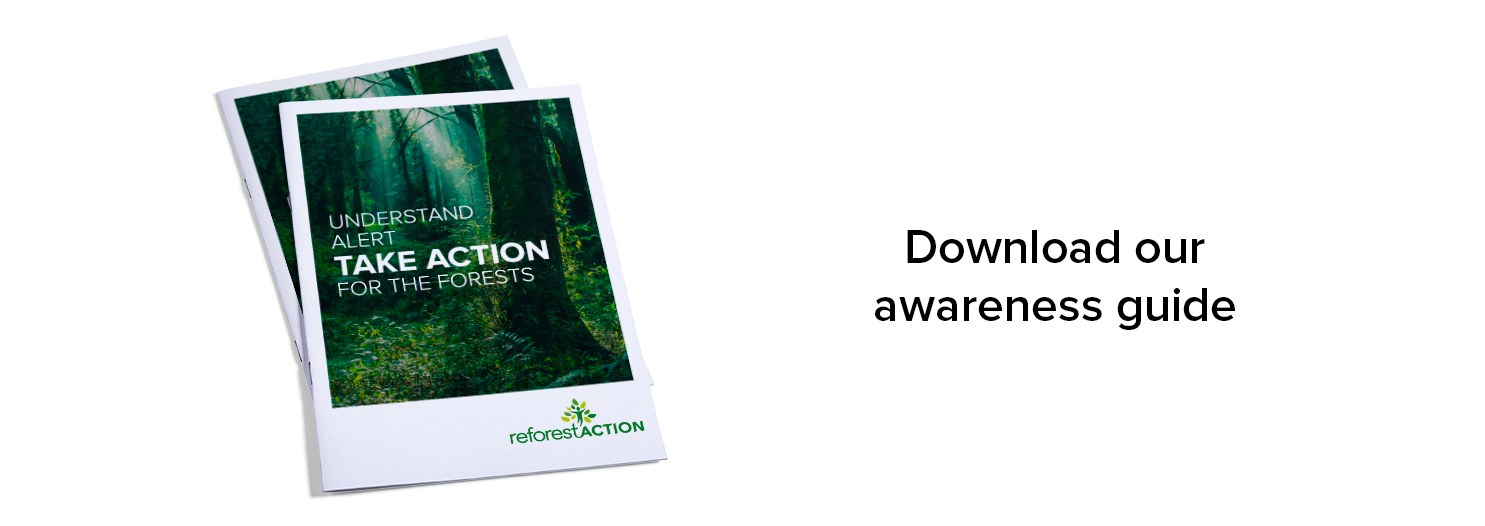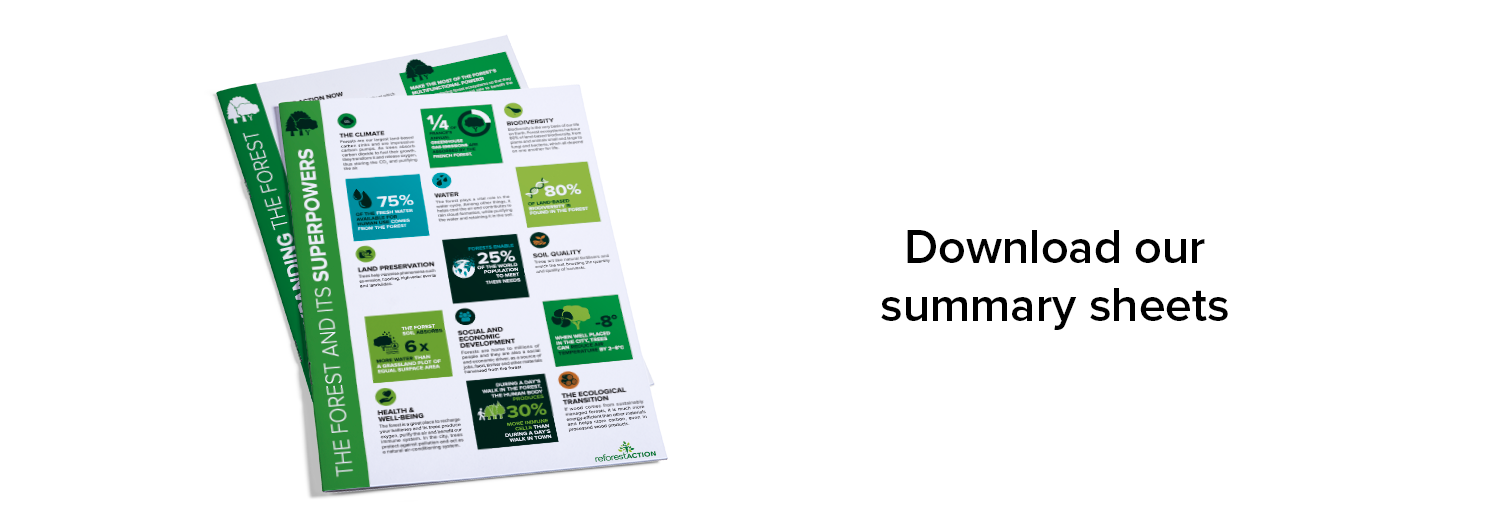
If the forest has immense powers, they are not unlimited! Forest degradation is on the increase all over the world, even though forests are essential to absorb our growing CO2 emissions. Planting trees of various species to reforest the planet's forests is a vital issue in the fight against climate change and to restore biodiversity. At the same time, we all need to act upstream by reducing our forest footprint and limiting our CO2 emissions, to help limit global deforestation, especially as climate change in turn affects the health of forests in a sustainable way.
Reducing your forest footprint
The forest is everywhere in our daily lives and in that of companies, and we are often unaware of it! Here are a few tips to reduce your company's forest footprint.
Identify in your activity the direct or indirect links with the forest and change your habits. Here are some examples:
1. Wood material. Make sure you only buy equipment made of certified wood or locally produced wood, avoid exotic woods as much as possible and favour circular economy.
2. Paper and cardboard. Limit your paper consumption, recycle your paper and packaging and use 100% recycled and certified paper and cardboard as much as possible. When producing printed materials, check paper certifications and plan for the right quantities to avoid waste.
3. Raw materials and food products. Prefer fair trade and certified (Rainforest Allianz, UTZ) products from local production.
4. Minerals. Be careful to keep your electronic products (tablets, telephones, TV screens, etc.) for a long time, have them repaired when possible and opt for reconditioned products.
And in general, be vigilant and require your service providers to ensure the traceability of the products/services they provide you with.
This is the best way to raise their awareness and encourage them to change.
Reducing your carbon footprint
It should be remembered that forest degradation is partly responsible for global warming, which in turn affects the health of forests in a sustainable manner. Reducing one's carbon footprint more widely is therefore a necessity to preserve forests. Carbon offsetting, while very important, is not enough. Indeed, CO2 emissions are immediately released into the atmosphere, whereas the sequestration of carbon in carbon sinks such as forests takes place over time and may be subject to uncertainties.
Some examples of actions to reduce your company's carbon footprint:
1. Rethink your employees' business travels
2. Adopt eco-gestures on a daily basis
3. Choose a renewable energy supplier
4. Beware of digital
5. Give preference to locally "responsible" service providers.
But above all, the challenge is to place you in a process that consists of rethinking your value chain towards greater sobriety.
Don't hesitate to call on a specialist firm to take your approach further.
It is therefore not a question of acting either on the reduction of our forest and carbon footprint, or on the restoration of forests, but rather on one AND the other!
Make your stakeholders aware of the challenges and benefits of forests
Forests are allies of humanity. They are indispensable in the preservation of social and ecological balances and provide us with many invaluable services every day. They play a major role in climate and biodiversity, but also in socio-economic development. However, their benefits are often little-known! It is essential to be aware of the services provided by forests and to understand the threats they face in order to realise the importance of protecting and restoring them. Reforest'Action offers you tools to help you do this.
And to understand everything in the blink of an eye... Find our summary sheets to remember the essentials!


